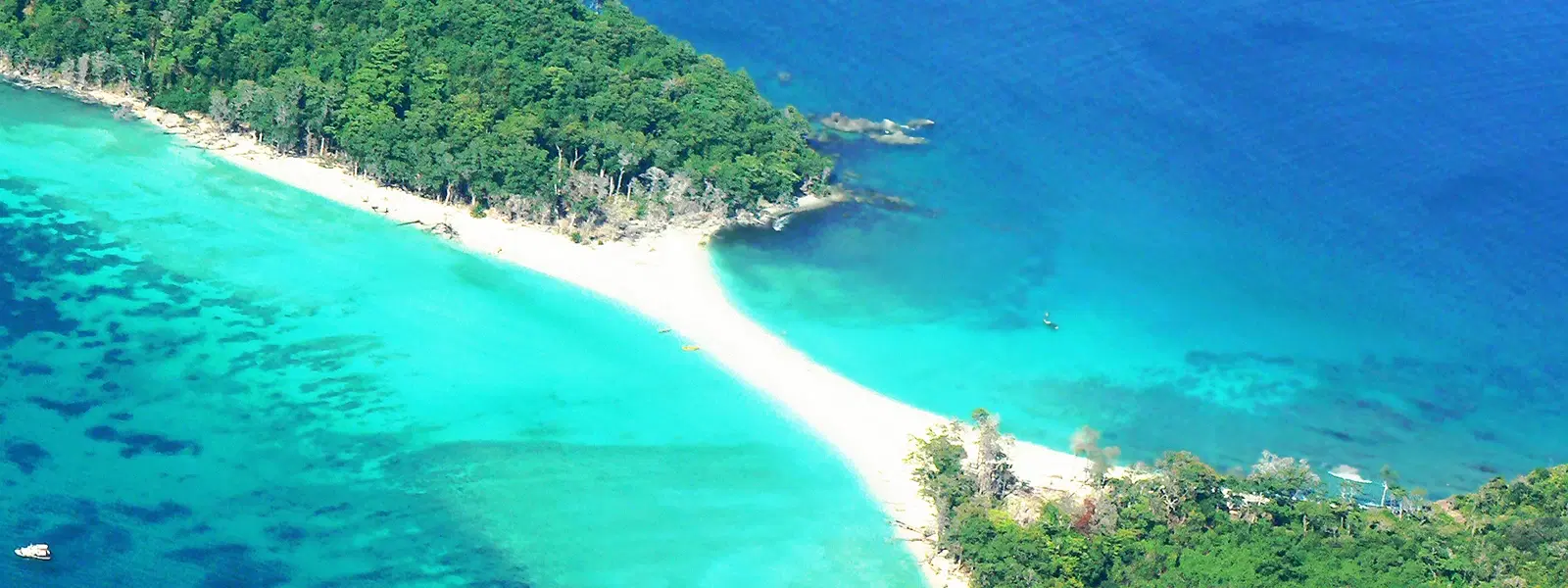
Hotels
•04 min read

Did you know that India's southeastern island groups are home to some of the most stunning natural landscapes and rich biodiversity in the Bay of Bengal? Nestled in a strategic part of the region, the Andaman and Nicobar Islands captivate travelers with their pristine beaches, lush forests, and vibrant marine life. This blog will guide you through understanding these unique islands, uncover their geographic importance, and share practical tips for exploring this untouched paradise.
The answer to the query "which island group of India lies to south east" is found in the Andaman and Nicobar Islands. Located in the Bay of Bengal, these islands stand apart from other island groups such as Lakshadweep, which are situated in the Arabian Sea. Unlike the popular southern islands of India near the mainland, the Andaman and Nicobar Islands offer a distinctive blend of natural beauty and cultural heritage that is rarely matched elsewhere.
The Andaman and Nicobar Islands are the result of complex geological processes that date back millions of years. These islands formed due to tectonic activities along the Indian plate, resulting in a diverse landscape of volcanic rock, coral reefs, and tropical forests. The archipelago stretches gracefully across the Bay of Bengal, lying just a few hundred kilometers from India's eastern coastline. This close proximity to the Indian mainland, coupled with their strategic location near Myanmar and Indonesia, adds to the geopolitical and ecological significance of these islands.
The Andaman and Nicobar Islands boast an unparalleled mix of biodiversity and cultural richness. Recognized as a Union Territory of India, they serve as a sanctuary for a variety of flora and fauna. From the colorful coral reefs to the indigenous tribes that have preserved their ancestral ways of life for centuries, every aspect of these islands tells a story of natural beauty and historical importance.
Travelers exploring the Andaman and Nicobar Islands can choose from an array of attractions. The mesmerizing Radhanagar Beach, world-renowned for its pristine sands and turquoise waters, offers a picturesque escape. History enthusiasts will be drawn to Cellular Jail, a poignant reminder of the islands' colonial past. Meanwhile, Ross Island enchants with its serene ruins and natural surroundings, while Baratang captivates with its limestone formations and mangrove forests. Additionally, activities like scuba diving and snorkeling reveal the islands' rich underwater biodiversity, making them a favorite among adventure seekers.

Beyond the natural allure, the cultural richness of the islands is equally fascinating. Indigenous tribes have inhabited these islands for centuries, preserving a unique cultural heritage that coexists with the vibrant history of colonial influence. Historical landmarks and museums detail the islands' past, from ancient settlements and marine trade to more recent struggles for freedom. This combination of cultural diversity and historical depth creates a compelling narrative for every visitor.
Reaching these islands is an adventure in itself. Well-connected by air, major Indian cities such as Chennai and Kolkata offer direct flights to the islands. Alternatively, travelers can opt for a scenic sea journey via ferries, which adds to the overall travel experience. When planning your trip, it is essential to check the visa requirements for international visitors, as the islands maintain strict regulations to protect their pristine environment.
Once you arrive, exploring the islands is efficient and enjoyable. Local taxis, boats, and ferries are the main modes of transportation. While renting a vehicle might not be an option in many parts of the archipelago, well-organized tours and local guides make it easy to navigate the islands. With well-planned itineraries suited to various interests, whether you're a spontaneous wanderer, a meticulous planner, a busy professional, or a luxury seeker, the islands promise an experience tailored to your travel style.
The ecological role played by the Andaman and Nicobar Islands cannot be overstated. These islands are not only a haven for diverse species but also crucial in maintaining the ecological balance of the Bay of Bengal. Numerous areas within the archipelago have been designated as protected zones to safeguard the unique biodiversity of coral reefs, mangroves, and tropical forests. By understanding their ecological importance, travelers can appreciate the need for sustainable tourism practices that help preserve these natural wonders for future generations.
Travel responsibly and ensure that your visit has a positive impact. Simple measures such as avoiding single-use plastics, respecting local culture, and adhering to conservation guidelines make a big difference. Being mindful of your surroundings and following the regulations set by local authorities helps protect the delicate ecosystem and preserves the islands' pristine nature. Remember, eco-friendly travel not only safeguards the environment but also enhances your overall experience by connecting you with the true spirit of these islands.

The Andaman and Nicobar Islands lie to the southeast of India in the Bay of Bengal.
India's southeastern island groups neighbor countries like Indonesia and Myanmar in the Bay of Bengal region.
The Andaman and Nicobar Islands form the island chain off the southeast coast of India.
The Andaman and Nicobar Islands lie to the southeast of the Indian mainland and are a Union Territory, not part of any state.
The southeastern islands of India consist of volcanic formations, coral reefs, and dense tropical forests, offering diverse landscapes and ecosystems.
India's southeastern island groups are a treasure trove of natural beauty and cultural heritage. The Andaman and Nicobar Islands, with their unique geography, intriguing history, and vibrant ecosystems, invite travelers to explore their diverse landscapes and immerse themselves in a rich tapestry of experiences. Whether it is the thrill of underwater adventures or the serene beauty of untouched beaches, these islands offer something extraordinary for every traveler. Embrace the journey and discover the hidden gems of one of the most enchanting regions in India.